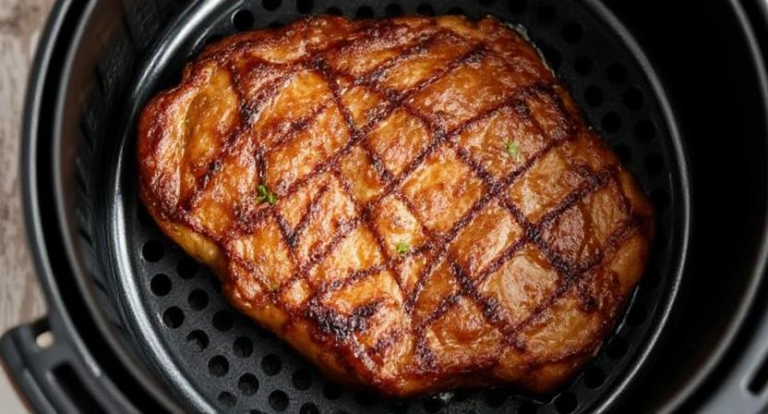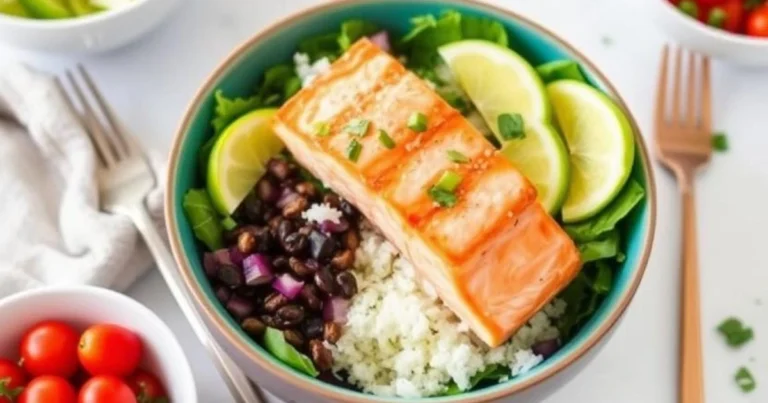How to Brine Chicken Breast
Table of Contents
Unlocking the secret to juicy, flavorful chicken breast starts with mastering the art of chicken brine. Professional chefs and home cooks alike know that brining makes ordinary poultry into a restaurant-quality meal. When you learn how to brine chicken breast, you’ll improve your cooking skills and impress everyone with your dishes.
Brining is a simple technique that involves soaking chicken in a saltwater solution. This method helps the meat stay moist during cooking, making the chicken incredibly tender and delicious. Whether you’re grilling, roasting, or pan-searing, knowing how to brine chicken breast can greatly enhance your culinary results.
Key Takeaways
- Brining enhances chicken breast moisture and flavor
- Salt solution helps meat retain water during cooking
- Works for multiple cooking methods
- Improves texture and tenderness
- Easy technique for home cooks
Understanding the Science Behind Chicken Brining
Crafting the perfect chicken brine is more than just cooking. It’s a science that turns simple chicken into a delicious meal. Learning the molecular magic behind chicken brine can take your cooking to new heights.
How Salt Transforms Meat Structure
Salt is key in changing chicken’s protein structure. When you use a brine chicken recipe, salt molecules start working with meat proteins. They:
- Relax muscle fibers
- Help keep water in the meat
- Make room for flavors to soak in
The Fascinating Process of Osmosis
Osmosis is a key part of your chicken brine method. Salt goes into the meat, making it a powerful tool for flavor and moisture. Water molecules move through cell membranes, bringing flavors deep into the chicken.
Benefits of Brining Poultry
A good chicken brine brings many benefits:
- Keeps the meat moist
- Makes flavors go deeper
- Makes the meat tender
- Reduces the chance of dry, tough chicken
“Salt is the most powerful ingredient in transforming ordinary chicken into a culinary masterpiece.” – Professional Chef
By grasping these scientific principles, you’ll make chicken that’s always juicy and full of flavor. It will impress everyone who tries it.
Essential Ingredients for the Perfect Chicken Brine
Making a great chicken brine is all about the right ingredients. It’s not just salt and water. It’s a mix that makes your chicken juicy and delicious.
The base of a good chicken brine is simple:
- Water: The main liquid for dissolving salt and other ingredients
- Kosher salt: Essential for keeping the meat moist
For a smoked chicken brine, you’ll need more ingredients for flavor. Think about adding:
- Sugar (brown or white) to balance the salt and help brown the meat
- Fresh herbs like thyme, rosemary, or sage
- Aromatics such as garlic, peppercorns, and bay leaves
| Ingredient | Purpose | Quantity (per gallon) |
|---|---|---|
| Kosher Salt | Moisture retention | 1 cup |
| Brown Sugar | Flavor balance | 1/2 cup |
| Black Peppercorns | Aromatic complexity | 2 tablespoons |
Pro tip: For smoked chicken brine, try wood-infused liquids or apple cider. They add unique flavors that go well with smoking.
“The secret to great chicken is not just in the cooking, but in the preparation” – Professional Chef Recommendation
Always use fresh, high-quality ingredients for your chicken brine. The right mix will make your chicken tender and full of flavor every time.
How to Brine Chicken Breast: Step-by-Step Process
Learning how to brine chicken breast can make your cooking better. It ensures your meat is juicy and full of flavor. This guide will show you how to make a great brine chicken recipe.
Brining is a simple trick that makes chicken amazing. By following these steps, you’ll make a chicken breast that will wow everyone.
Preparing Your Brine Solution
Making the perfect brine solution is key. Here’s how to do it right:
- Start with cold water
- Choose kosher salt for the best taste
- Add herbs and spices for extra flavor
Proper Brining Times and Temperature
The brining time depends on your chicken’s size and thickness. Here’s what to do for the best results:
| Chicken Breast Weight | Brining Time | Refrigeration Temperature |
|---|---|---|
| 4-6 oz breast | 30-60 minutes | Below 40°F |
| 8-10 oz breast | 1-2 hours | Below 40°F |
Storage and Safety Tips
Food safety is crucial when brining chicken. Always use a non-reactive container like glass or food-grade plastic. Store your brining chicken in the fridge to stop bacteria from growing.
“The key to perfect brining is maintaining consistent cold temperature and using fresh ingredients.” – Professional Chef
After brining, rinse the chicken with cold water. Then, pat it dry with paper towels. This removes extra salt and gets the meat ready for cooking.
Common Brining Mistakes to Avoid
Mastering chicken brine needs careful attention. When learning to brine chicken breast, several mistakes can ruin your dish.
- Salt Concentration Pitfalls: Too much salt makes meat too salty. Too little prevents flavor absorption.
- Time Management: Brining too long can make chicken mushy and waterlogged.
- Temperature Control: Wrong brining temperatures can lead to bacterial growth.
Understanding chicken brine’s science helps avoid these mistakes. Professional chefs suggest precise measurements and constant monitoring.
“Perfect brining is about balance – not too much, not too little” – Chef Marcus Rodriguez
Keeping your chicken brine clean is key. Always use clean tools and sanitized containers to avoid foodborne illnesses.
| Brining Mistake | Potential Consequence | Prevention Strategy |
|---|---|---|
| Incorrect Salt Ratio | Overly Salty Meat | Use precise measurement (4-6% salt solution) |
| Extended Brining Time | Mushy Chicken Texture | Follow recommended time (1-2 hours max) |
| Warm Temperature Brining | Bacterial Growth | Brine in refrigerated environment |
Knowing these common mistakes helps you brine chicken breasts perfectly every time.
Cooking Methods for Brined Chicken Breast
After brining your chicken, picking the right cooking method is key. It can turn your dish into a masterpiece. Whether you’re using a fried chicken brine or a smoked chicken brine, the right technique matters.
Grilling Brined Chicken
Grilling brined chicken brings out amazing flavors and keeps it juicy. Here’s how to grill it right:
- Preheat grill to medium-high heat (375-425°F)
- Pat chicken dry before grilling
- Cook for 6-8 minutes per side
- Use a meat thermometer to ensure 165°F internal temperature
Oven-Roasting Techniques
Oven-roasting makes your brined chicken breast cook evenly and get crispy skin. Here’s what to do:
- Preheat oven to 425°F
- Place chicken on a wire rack
- Roast for 20-25 minutes
- Let rest 5-10 minutes before serving
Pan-Searing Methods
Pan-searing gives your brined chicken a golden crust and keeps it moist. Here’s how to do it:
| Technique | Temperature | Cooking Time |
|---|---|---|
| Cast Iron Skillet | Medium-High | 4-5 minutes per side |
| Stainless Steel Pan | Medium | 5-6 minutes per side |
Pro tip: Always let your brined chicken rest after cooking. This helps juices redistribute and keeps it tender.
Conclusion
Learning to brine chicken breast can make your cooking amazing. It’s all about understanding the science and following the right steps. This way, you’ll always make juicy, tasty chicken that everyone loves.
Brining chicken is more than just using salt and water. It’s about paying attention to every detail. From choosing the best ingredients to watching the brining time and temperature. You’ll learn to try new herbs, spices, and liquids to make your chicken even better.
Remember, each chicken breast is different. What works for one might not work for another. Keep learning and adjusting your brining method to fit your taste and cooking style.
As you get better at brining, you’ll become more than just a recipe follower. You’ll grow as a cook, feeling more confident in the kitchen. Soon, you’ll be making chicken dishes that taste like they’re from a restaurant, right in your own home.
FAQ
How long should I brine chicken breast?
Brine chicken breast for 30 minutes to 2 hours. Smaller breasts need 30-60 minutes. Larger ones can soak for up to 2 hours. Be careful not to over-brine, as it can make the chicken too salty.
Can I use kosher salt instead of table salt for brining?
Yes, use kosher salt for brining. It dissolves well and seasons evenly. Remember, kosher salt is less dense than table salt, so use 1.5 times more by volume.
Is it safe to brine chicken at room temperature?
No, brine chicken in the refrigerator to avoid bacterial growth. Keep it at 40°F or below. Never leave chicken at room temperature for more than 2 hours.
Can I reuse a chicken brine?
No, never reuse a brine after it has chicken in it. The solution becomes contaminated with bacteria and must be thrown away to prevent illness.
What’s the difference between wet and dry brining?
Wet brining soaks chicken in a saltwater solution. Dry brining rubs salt on the chicken’s surface. Wet brining adds moisture, while dry brining can make the skin crispier.
Can I add sugar to my chicken brine?
Yes! Sugar balances the saltiness and promotes browning. It also tenderizes the meat and adds flavor to your chicken.
How do I know if I’ve over-brined my chicken?
Over-brined chicken tastes extremely salty and feels mushy. If it’s very soft or tastes too salty, it’s been brined too long.
Can I brine frozen chicken?
Thaw chicken before brining. Frozen chicken can lead to uneven brining and safety issues. Always thaw it in the refrigerator before brining.
What herbs work best in a chicken brine?
Use rosemary, thyme, bay leaves, and sage in your chicken brine. These herbs add aromatic flavors. Try different combinations to find your favorite.
How much salt should I use in a basic chicken brine?
Use 1/4 cup of salt per quart of water for a basic brine. For a basic brine, use 1/4 cup kosher salt (or 2 tablespoons table salt) per 4 cups of water. Adjust to taste.







